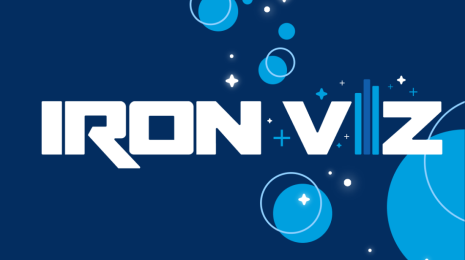Four data visualization books to add to your wish list this year
This blog post is part of a reoccurring series written by Tableau Technical Evangelist Andy Cotgreave. Every month, Andy dives into the world of data and shares ideas that he believes are crucial to your success. What does every data person need to know? Read on to find out.
As we’re approaching the end of 2019, it’s time to reflect on my favourite data viz books of the year. Each of these books provided me with new ideas, gave me a deeper appreciation for our craft, and inspired me to help others. Over my ten years using Tableau, books like these have helped me hone my craft. If any of these books give you ideas, there are myriad ways you can apply those ideas. Christmas is just around the corner! If you’re looking for the perfect gift for any of the data geeks in your life, you can’t go wrong with these:

How Charts Lie by Alberto Cairo
“A picture is worth a thousand words, but what if we don’t understand what we’re looking at?” asks Alberto. In this book, Cairo looks at the myriad of ways in which charts can be used to deceive. He argues that all of us need to develop a better sense of “graphicacy”—the ability to understand information presented visually. It’s extremely digestible (I read it in one sitting, I was so enthralled), and applies to the needs of businesses, as well as society, to be more data literate. Seriously: this book should be required reading for everyone, including organizations that want to promote a data culture. My one reservation? While the title is great for selling books, I’m uncomfortable with it. Some of the “lies” Cairo discusses are merely “compromises” we need to make when visualizing data. Every chart is a compromise—something I’ve written about many times. However, not all compromises are deliberate deceptions. That said, I love this book. Everyone should read it.
Info We Trust by RJ Andrews
It took me a long time to get through this book. I’ll be honest, it’s quite a tough read. But the effort is absolutely worth it. In this book, RJ Andrews describes the craft of data storytelling as he sees it. The book’s cover claims it will “show how to arrange data into stories that deliver insights” and that its “rich with practical details.” But I don’t think practicality is what makes this book shine (in fact, if you want practical, see the next book). I love this book because it celebrates, with amazing depth, the craft of data storytelling. By reading this book, you will discover links between our craft and every walk of life: fiction, art, engineering, architecture, biology, design, physics, and on, and on. RJ Andrews’ seemingly endless list of sources, metaphors, and anecdotes will inspire you. It will drive home the truth that data storytelling isn’t just dragging and dropping stuff to make charts. Every action you take as you develop insights is rich in history, philosophy, and science. Next time you make a chart in order to craft your story, you’ll feel the centuries of knowledge behind you.
Want to see some of RJ’s own work? Follow him on Tableau Public! You can also check out this blog post for tips on improving your data storytelling.
Storytelling with Data: Let’s Practice! by Cole Nussbaumer Knaflic
What RJ Andrews delivers in background and inspiration, Cole delivers in practicality. Cole describes it best herself: this is not just a book but “an immersive learning experience.” That’s a high claim: but it stands up to scrutiny because what you have here is a workshop-within-a-book. Most books in this field see an author teaching and/or preaching their views. This book gets you involved on almost every page. It reminds us that success in data communication is about far more than “choosing the right chart.” Sure, that gets its place in this book, but so does considering the fundamental purpose, annotation layers, layout considerations, insight delivery, and the multitude of other requirements for success. There are worked-through examples everywhere, as well as exercises for you to do. This is possibly the most hands-on book I’ve seen in this field.
Avoiding Data Pitfalls by Ben Jones
What do I love about Ben’s style? First of all, it’s like he’s in the room talking with you. His prose is conversational, and it’s great fun to read. Second, he’s humble—he knows his stuff, but he’s open to your opinions, too. And third, he’s talking from real-world experience. With those traits, what do you get in this book? A dive into the world of mistakes we’ve all made when working with data. Ben’s made them, I’ve made them (ask me about The Guardian and US Crime data one day…). Ben’s goal is to stop you from making them. He takes a look at 7 main pitfalls (mathematical, statistical, graphical, design, etc.) and loads each chapter with clear examples and personal anecdotes. This book may be easy and fun to read, but you will finish it armed with the know-how to avoid the same mistakes the rest of us have made.
Follow Ben to keep up with his latest vizzes!

These books are sure to leave you feeling excited about your next data visualization project. Don’t forget to publish your work to Tableau Public!
Already own one of these books? Planning to get one? We’d love to hear your thoughts. Let us know what you think on Twitter by tagging @acotgreave and @tableaupublic.







